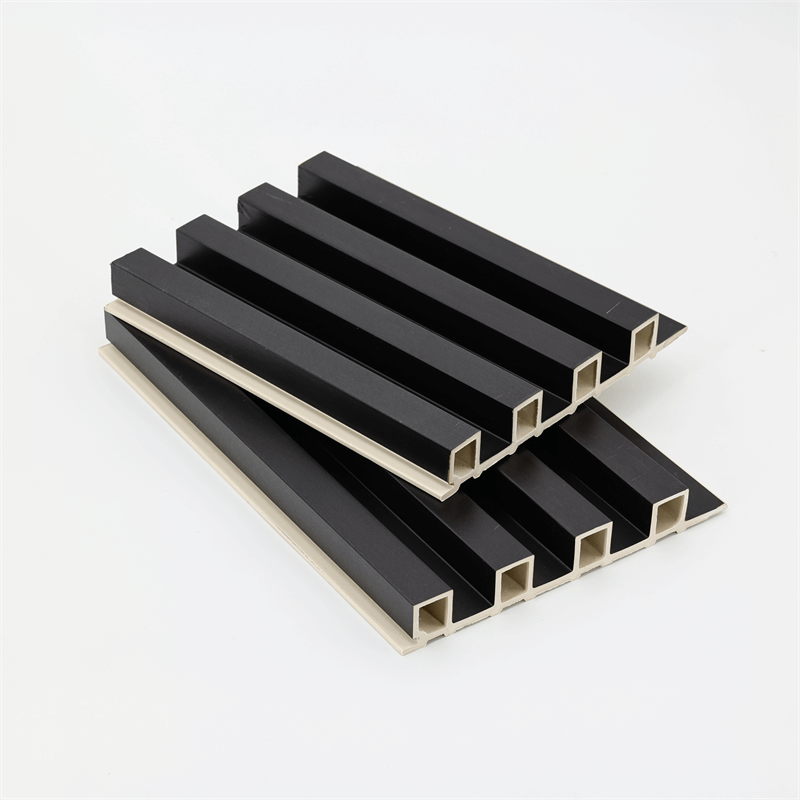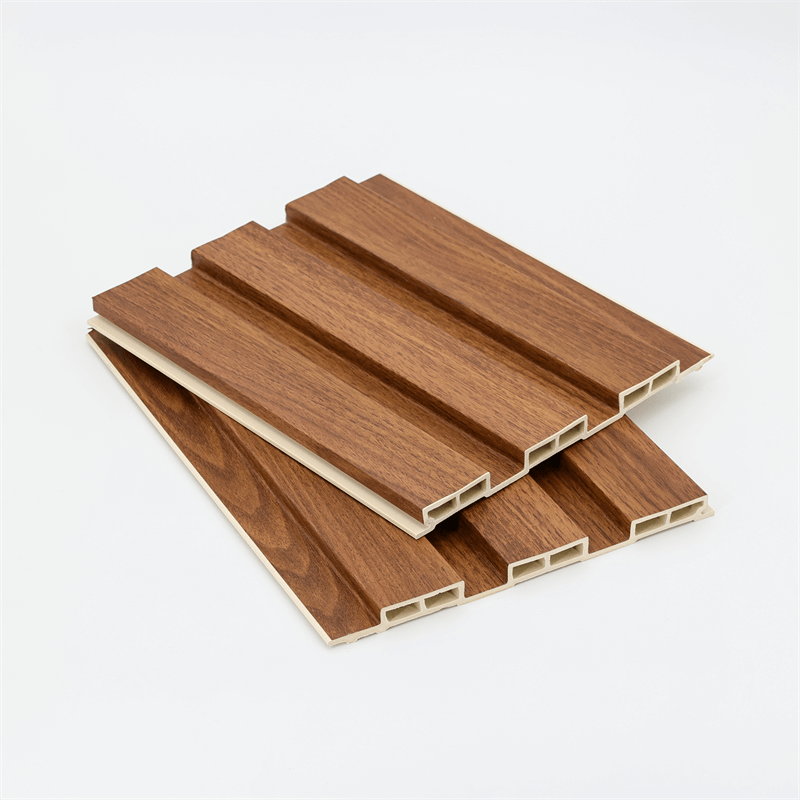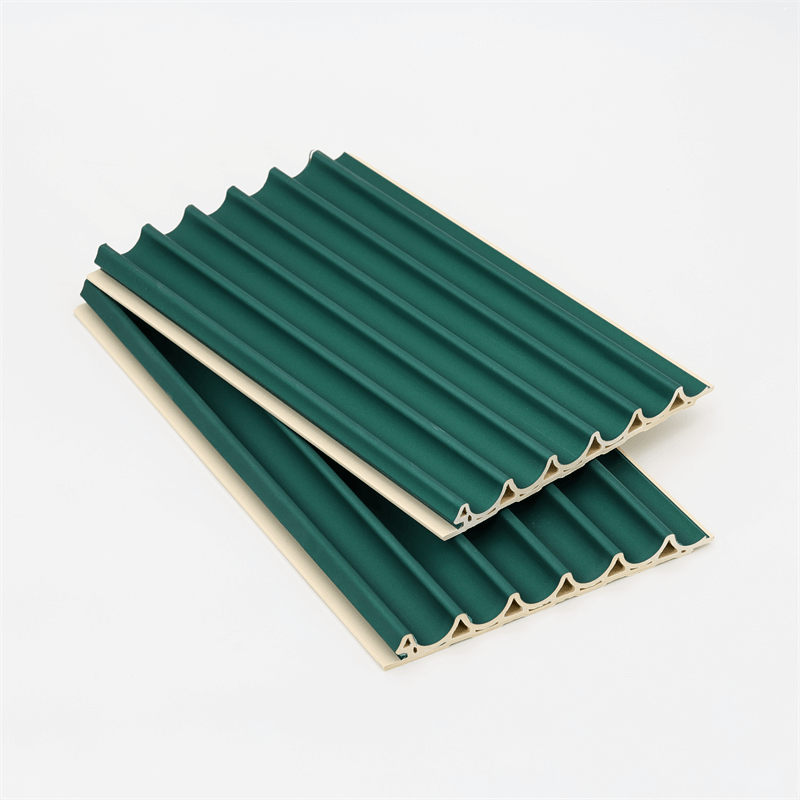Thermal performance is a crucial aspect of building design, as it directly impacts energy efficiency and occupant comfort.
WPC (Wood-Plastic Composite) wall panels offer an effective solution for enhancing the thermal performance of buildings.
This essay explores the role of WPC wall panels in improving insulation, reducing heat transfer, their installation considerations, and the benefits they bring to the overall energy efficiency of a structure.
By understanding these aspects, architects, builders, and homeowners can make informed decisions to create more energy-efficient and comfortable spaces.
I. Improved Insulation Properties:
- Enhanced Thermal Resistance: WPC wall panels possess excellent insulation properties, effectively reducing heat transfer between the interior and exterior of a building. The combination of wood fibers and thermoplastic polymers in WPC panels creates a material with high thermal resistance, minimizing heat flow through the walls.
- Reduced Thermal Bridging: Traditional building materials, such as concrete or metal, are susceptible to thermal bridging, where heat conducts through the structural elements, leading to energy loss. WPC wall panels act as a thermal barrier, reducing the occurrence of thermal bridging and improving overall insulation performance.
II. Minimized Heat Transfer:
- Reduced Conductive Heat Transfer: WPC panels have lower thermal conductivity compared to materials like metal or concrete. This means they are less prone to conducting heat, resulting in decreased heat transfer between the interior and exterior of a building. As a result, energy consumption for heating and cooling is reduced, leading to energy savings.
- Enhanced Air Tightness: Proper installation of WPC wall panels ensures an airtight seal, minimizing air leakage and preventing drafts. This enhances the thermal efficiency of the building envelope, as air infiltration can significantly impact heating and cooling loads.
III. Installation Considerations:
- Proper Insulation Integration: WPC wall panels should be integrated into the building’s insulation system to achieve optimal thermal performance. Proper insulation materials, such as rigid foam or mineral wool, should be installed in conjunction with WPC panels to further enhance insulation capabilities.
- Vapor Barrier Considerations: In regions with significant humidity or moisture concerns, it is essential to consider the use of vapor barriers in conjunction with WPC wall panels. Proper vapor barrier installation prevents moisture migration and condensation within the wall assembly, ensuring long-term thermal performance and preventing potential damage.
IV. Benefits of WPC Wall Panels in Enhancing Thermal Performance:
- Energy Efficiency: By minimizing heat transfer and improving insulation, WPC wall panels contribute to increased energy efficiency in buildings. Reduced heating and cooling loads result in lower energy consumption and utility costs, making buildings more sustainable and cost-effective to operate.
- Comfort and Indoor Environment: Improved thermal performance provided by WPC wall panels creates a more comfortable indoor environment for occupants. Consistent temperatures, reduced drafts, and balanced humidity levels enhance comfort and well-being.
- Environmental Sustainability: WPC wall panels are often manufactured using recycled materials, making them an environmentally friendly choice. By enhancing the thermal performance of a building, WPC panels contribute to reducing carbon emissions and the overall environmental footprint.
- Design Flexibility: WPC wall panels come in various designs, textures, and finishes, allowing for creative and aesthetically pleasing applications. The design flexibility of WPC panels enables architects and designers to incorporate them seamlessly into different architectural styles while enhancing thermal performance.
WPC wall panels offer a practical solution for enhancing thermal performance in buildings.
Their improved insulation properties, reduced heat transfer, and proper installation considerations make them a valuable tool in creating energy-efficient and comfortable spaces.

By incorporating WPC wall panels, architects, builders, and homeowners can reduce energy consumption, increase comfort levels, and contribute to environmental sustainability.
As the importance of energy efficiency and sustainability in the built environment continues to grow, the adoption of WPC wall panels as a means to enhance thermal performance becomes increasingly relevant.
By understanding the benefits and considerations associated with WPC panels, stakeholders in the construction industry can make informed decisions that result in more efficient and sustainable buildings.
In conclusion, WPC wall panels offer a versatile and effective solution for enhancing the thermal performance of buildings.
Through their improved insulation properties and minimized heat transfer, they contribute to energy efficiency, reduced heating and cooling loads, and lower utility costs.
Proper installation considerations, such as integrating insulation materials and addressing vapor barrier requirements, ensure optimal thermal performance and long-term durability.
The benefits of WPC wall panels extend beyond energy efficiency. They create a more comfortable indoor environment by minimizing drafts and maintaining consistent temperatures.
Additionally, their environmental sustainability, design flexibility, and use of recycled materials make them a responsible choice for eco-conscious builders and homeowners.
As the construction industry continues to prioritize energy efficiency and sustainable design, WPC wall panels provide a valuable tool for achieving these goals.
By incorporating WPC panels into building projects, professionals can enhance thermal performance, reduce environmental impact, and create spaces that are both functional and comfortable for occupants.
It is crucial for architects, builders, and homeowners to recognize the significance of thermal performance and make informed decisions when selecting building materials.
WPC wall panels offer an attractive solution that combines thermal efficiency, durability, and aesthetic appeal.
By embracing the benefits of WPC panels, we can contribute to a more sustainable and energy-efficient built environment.


